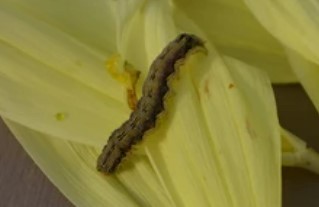
Mythimna separata is a moth of the family Noctuidae. It is found in China, Japan, South-east Asia, India, eastern Australia, New Zealand, and some Pacific islands. It is one of the major pests of maize in Asia. The larvae eat leaves, and can eat up all the leaves of crops when they occur, causing serious losses. Because of its flocking, migratory, omnivorous, and gluttonous properties, it has become a nationally important agricultural pest. Larva can be hand-picked and adults can be attracted using pheromones. Regulation of water level in the fields, and removal of alternate hosts from the field are also effective. Selective pesticides and weedicides can also used in the field. New, effective methods are needed to control this organism.
Mythimna separata is a typical seasonal long-distance migratory pest, which mainly damages grain crops such as corn and wheat. Three conventional control methods are available, including biological trapping of adults, physical trapping of adults and pharmaceutical control. And gene editing technology is the most effective method. Lifeasible provides the gene editing services for mythimna separata with zinc-finger nucleases (ZFNs), transcription activator-like effector nucleases (TALEN) and CRISPR/Cas9 to control their reproduction and reduce the harm caused by mythimna separata.
| Editable genes | Relevant traits exhibited after editing |
| Chitinase |
|
| EcR |
|
| CYP4G199 |
|
| OBP6 OBP11 |
|
| PBPs |
|
Lifeasible offers three means include ZFNs, TALEN and CRISPR/Cas9 to edit some genes to control mythimna separata by reducing larval birth rates and drug resistance or altering their foraging behavior. If you are interested in our services or if you have any questions, please click online inquiry for more detailed information.